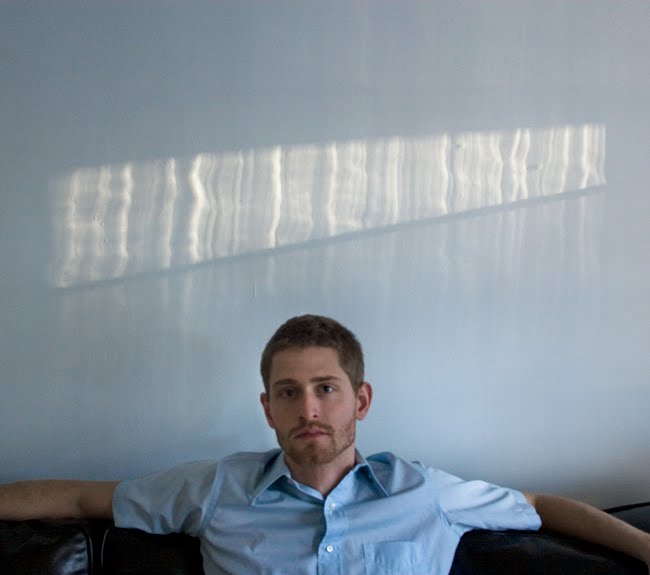This is something I've been working on in my living room, for over the couch. When I made the initial sketch I had a particular interest in the challenges of these two materials—leaves and watercolor—with which I have very little experience. The leaves, I figured, would be an unique challenge since their shape (2- and 3-dimensionally), color, texture, and sturdiness are constantly shifting not only while I produce the work, but also for a long time afterward. I figured they'd fade, crinkle, crack, and crumble over weeks—which would provide an interesting juxtaposition to the watercolor materially and narratively. Possibly, after a few months, it would look like the leaves were being squeezed so all the color was being drained slowly out of them down the wall. It's not there yet, and I still can't anticipate if it'll ever look like that.
It doesn't have to. Principally, this was going to be a sort of experiment—an exercise in learning how to recognize and respond to new materials. While the watercolor worked out very well, even better than I anticipated, the leaves have surprised and frustrated me in a number of ways that would make me handle them differently if I ever use them again. Establishing the outline and adding depth to the cloud was particularly difficult and in the end, those aspects didn't match up exactly to the first or any of the revised sketches I made. Originally, I wanted the leaves to have the exact shape of a thunderhead—just a simple representation of a cloud. Later, I wanted it to look more like a pile of leaves that the viewer was raking up when at this frozen moment in the chore, looking down on the pile, it resembles something like a thunderhead. The dripping watercolor, I was hoping, would evoke the lines a rake leaves behind in the cleared grass—as well as the obvious tie-in to the imagined thunderhead. I think in the end, it's not too far off from the second sketch, but the pile of leaves really needs more depth. However, besides these materials being unpredictable, they are finite. I hadn't gathered enough and there were no more to be had by the time I and the leaves got to this current state.

As far as using the two materials together, I was wondering what sort of productive tensions they would establish, in particular in the representation of a cloudburst. The differences in the way they convey depth, their materiality, gravity, moisture and shape seem to be the most relevant ways in which the two materials disagree. On another hand, they are joined imaginatively, beyond the simple representations of a cloudburst or a raked pile of leaves, by the image of blood and flesh—a sense of mortality. At best, I would hope these three impression would run together for the viewer—allow him or her to create a little narrative in their imagination about raking leaves and the moment in which we recognize a shape in something seemingly random (like finding a face in a carpet). And then hopefully, the sense of mortality could leak into whatever other resonances that symbol of a cloudburst might have for the viewer. So I guess the piece would be about that moment of recognition and the imaginative and emotional flight that follows.


Maybe someone would see that, but I'm having my doubts. The thing that bothers me most about the work so far, is actually the visual relationship between the watercolor and the leaves. For a lack of a better word, it feels “gimmicky” to me. I guess the disparity between the two materials is too great. They are too different. They lack the sense of one material needing the other. There's probably some other material out there, beside watercolor, that would accomplished everything I described above, more poignantly. I don't know what that material is, but I've just got a gut feeling these two don't quite work together.

So, at this point, I'm looking at this piece like it's in a middle stage. I'm needing to add something to it, but I'm not sure what yet. Maybe it needs a third material to somehow “join” the watercolor and leaves. Maybe the whole leaf pile narrative/idea needs to be dropped and I should re-imagine the representation as a full blown child's fable or something. Not sure. I just have a feeling what ever I add, I will be adding blue—a rich cobalt blue...














